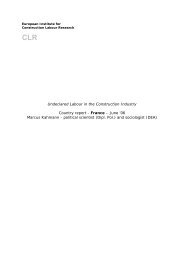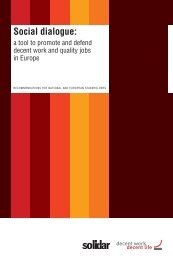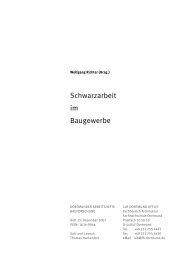Japan – what can we learn? - Construction Labour Research
Japan – what can we learn? - Construction Labour Research
Japan – what can we learn? - Construction Labour Research
You also want an ePaper? Increase the reach of your titles
YUMPU automatically turns print PDFs into web optimized ePapers that Google loves.
1993. Then there was a decrease to 11 from 2000 to 2004 (withoutcalculating overseas companies).3. The Movement since 1980sHundred million 億 円yen120001000080006000400020000Figure 6 Change of received overseas orders (from 1985 to1989)1980 1981 1982 1983 1984 1985 1986 1987 1988 1989アジア Asia Mideast 中 東 アフリカ Africa NA 北 米 中 LA 南 米欧 州 東 欧 大 洋 州EUEOceaniaEuropeResource: overseas operations strategy of <strong>Japan</strong>ese construction industryr rtIn the 1980s, orders in the <strong>Japan</strong>ese construction industry tended toincrease till 1983, decreased from 1983 to 1987, and increased after1988.According to a report produced by a research group on Asianinfrastructure, the main cause of the reduction from 1983 to 1987 wasstagnation in the Asian economy, because ASEAN governments hadreduced their public investment in order to reduce budget deficits, andof exchange fluctuations by the Plaza Accord in 1985.Subsequently, according to the report, the factor of change that led toan increase after 1988 was that the ASEAN economy emerged fromthe recession. The relocation of manufacturing industries to moveproduction units to other parts of Asia became active, seeking for lowlabour costs and reduced allowances. As a result, <strong>Japan</strong>eseconstruction companies received building orders. After the late 1980sthese orders for <strong>Japan</strong>ese local corporations of construction <strong>we</strong>reprolonged since, in addition, foreign direct investment had increased.For example, according to the Kajima Overseas Asia homepage, thenumber of factories and plants constructed by Kajima Corporation(that established a local corporation abroad) is 78 in ASEAN from1988 to 1996. It is about 60% from 1973 to 2006.CLR News No 2/200648









